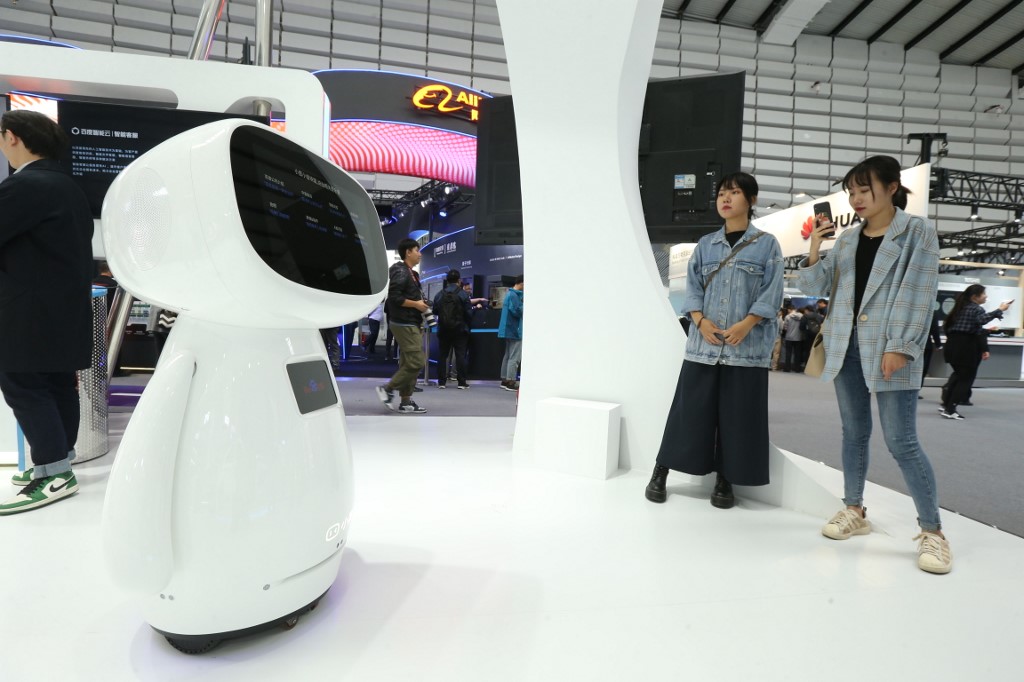The smart cleaning market is set to be worth US$24.8 billion by 2026 as we increasingly turn to AI to bolster public confidence as virus-hit economies strive to recover
Despite significant advances in medical and healthcare technologies in the past year, the spotlight remains firmly fixed on public health and safety as Covid-19 outbreaks continue to occur around the globe.
Countries are not only grappling with a year-long health crisis and bleak economic outlook, but they must also embrace the evolving consumer behaviours that require innovative solutions to ensure people and businesses can adapt to a new normal in the post-pandemic era.
The Covid-19 pandemic has dramatically disrupted labour and social trends, with many rapidly adjusting to working or schooling from home. In addition, people are reducing time spent in public areas and opting for new forms of entertainment due to anxiety stemming from concerns over the safety of public spaces and recreational or shared venues.
Also on AF: Jio’s ‘cheaper’ homegrown 5G system could have global potential
As markets begin to gradually open up again, there is a need to restore public confidence in these spaces and address heightened demands for cleanliness, safety and convenience.
One of the most effective solutions to help transition to the new normal and resume regular public activity is the effective adoption of robotics technologies into daily life and businesses.
Smart cleaning technology is providing a new level of assurance and efficiency expected by consumers today, and ultimately elevating health and safety standards for public areas and businesses.
Smart cleaning has been on the rise on a global scale. According to the International Federation of Robotics (IFR), robotics cleaning technologies, such as vacuum cleaning and disinfection functions, are widely adopted in the past years.
SALES SURGE
It is estimated that 31 million household robots were sold between 2016 and 2019, out of which 96% were vacuum and floor cleaning robots.
The effects of the ongoing pandemic are adding to the growing momentum in robotic cleaning technology adoption. The market is projected to hit US$24.8 billion by 2026 – averaging a compound annual growth rate (CAGR) of 22.8%.
New regional and international robotics cleaning brands have also emerged, responding to growing market demands for more efficient, customised and effective solutions.
Key market drivers are dedicating substantial investment into research and development, with strategic partnerships being the prime growth strategy to sustain presence amidst a competitive market landscape.
SUSTAINABILITY CONCERNS
The prominence of smart cleaning today is challenging both the breadth and depth of cleaning and disinfection practices, whilst addressing concerns for sustainability.
In response to the increased use of chemical disinfectants during the Covid-19 pandemic, the leading names in the smart cleaning space are those that meet and redefine levels of quality, performance, safety and reliability, whilst maintaining a delicate balance between biocidal efficacy and the responsible use of chemicals – and safer alternatives whenever possible.
The Asia-Pacific is currently the frontrunner in cleaning robotics, with the market projected to record the highest growth rate in the world.
HYGIENE PRACTICES
In Hong Kong, cleaning robots offer much-needed confidence to the public, whose awareness of hygiene practices in public and personal areas has been heightened as a result of the pandemic.
Singapore, in turn, recorded 658 industrial robots per 10,000 workers as of 2019 – the second-highest robot density in the world. As for Japan, the market has been at the forefront of robotics development, with the pandemic further increasing the demand for such technology for more practical tasks.
Paving the way for the future of cleaning, collaborative robots, or ‘cobots’, are beginning to emerge in the smart cleaning market landscape. Cobots differ from traditional robotic solutions and place strong emphasis on the interaction and relationship with human workforce.
REPETITIVE TASKS
By leveraging cobots’ inherent advantages, they can take on monotonous, repetitive, or strenuous tasks, thereby enabling workers to redirect their time and expertise on more dedicated and nuanced needs.
The uncertainties surrounding the Covid-19 pandemic have given rise to more stringent and transparent public health and safety requirements. As the outbreak cycle evolves, health and well-being will continue to top the agenda for governments, businesses and individuals.
Restoring confidence is essential as the new normal takes shape, ensuring people feel assured that they can live, work and play safely in their personal, professional and commercial spaces.
- Lewis Ho is the Chief Executive Officer of Avalon SteriTech
Read more:
Tapping into opportunities in new water technologies
The crypto conundrum and the challenges of investing in Bitcoin
























